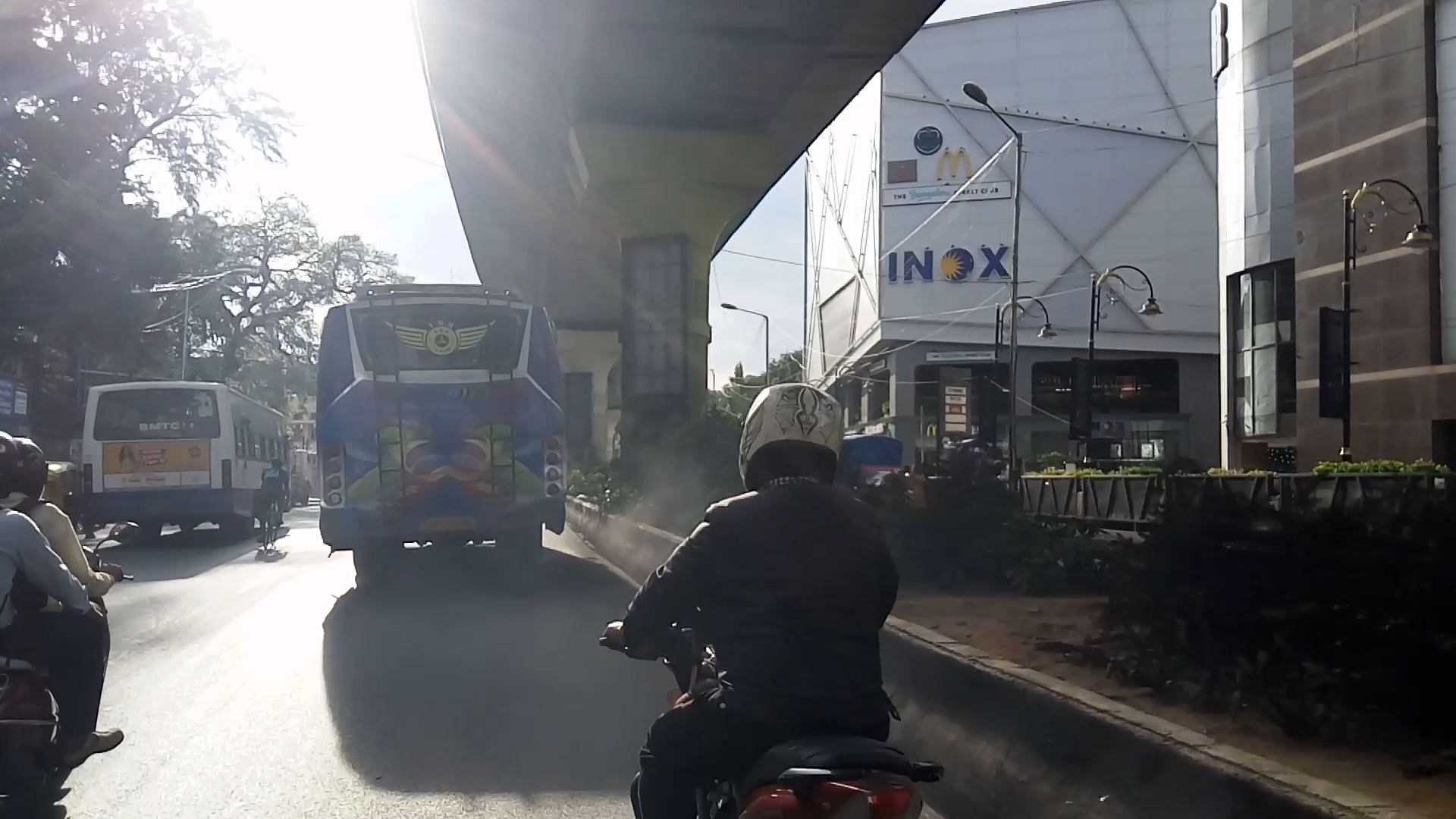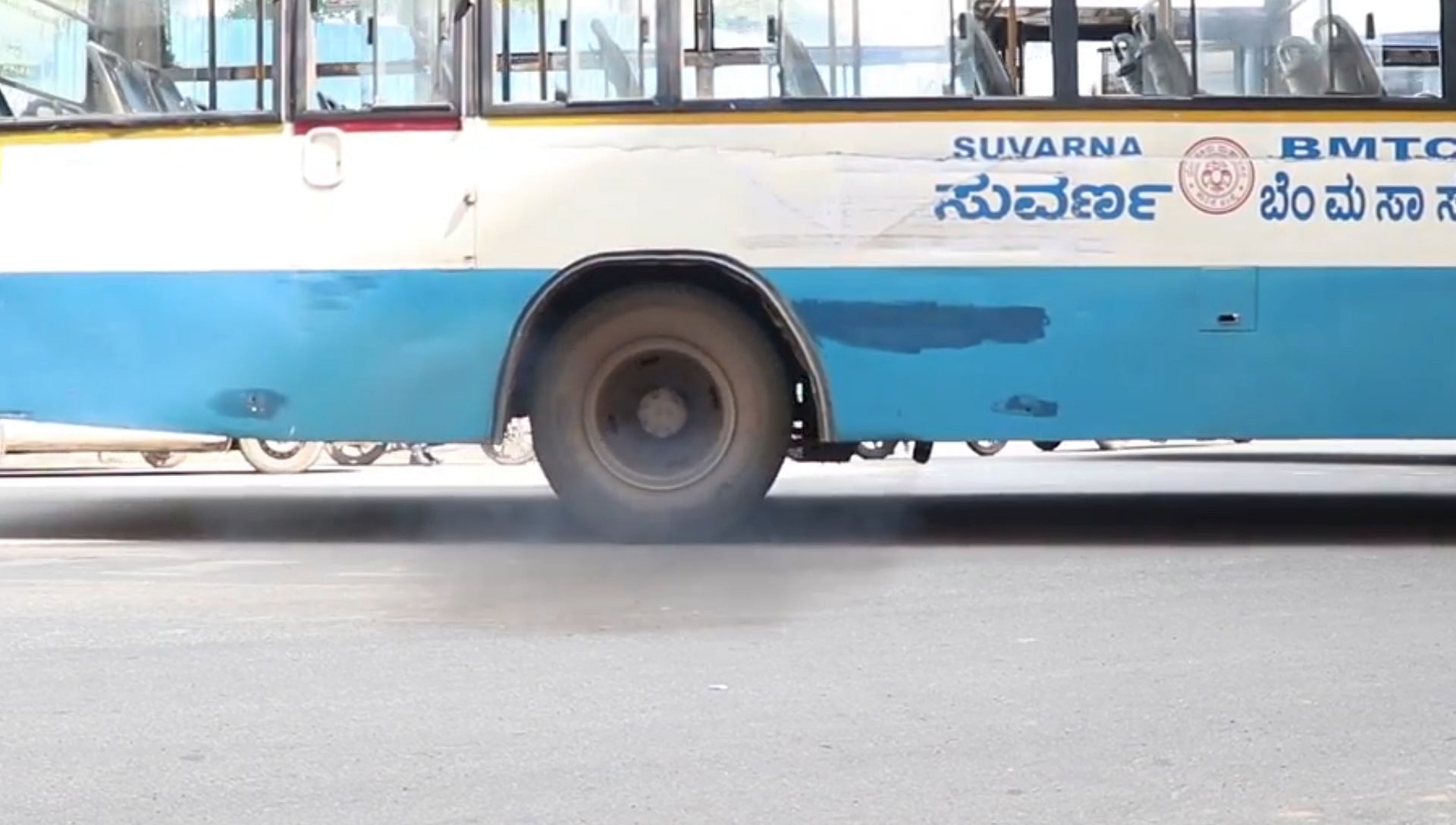

Think carbon dioxide causes only global warming? Wrong. Breathing air with a high concentration of the gas can make one ill. For Bengalureans, this is a cause of concern.
According to a 2016 study by the Centre of Ecological Science (CES), Indian Institute of Science (IISc), Bengaluru’s carbon dioxide (CO2) emissions is fourth in the list of CO2-emitting cities. Bengaluru’s CO2 emission is 19,796.5 Gg (Gg, a unit of mass equal to one million kg), out of which 43% (8,608 Gg) is contributed by vehicular emission.
According to a World Health Organization report, the health effects from the increase in carbon dioxide and other Greenhouse Gases (GHGs) include heart disease, stroke, chronic obstructive pulmonary disease, lung cancer, and acute respiratory infections in children.
Dr TV Ramachandra, from the CES, IISc, informed that emissions from the road transport sector are directly related to the number of motor vehicles on the road as well as the distance these vehicles travel.
The vehicular CO2 emission in Delhi, Greater Mumbai, Kolkata, Chennai, Hyderabad, and Ahmedabad is 12394 Gg, 3851 Gg, 1886 Gg, 4180 Gg, 7788 Gg, 2273 Gg respectively. Chart- IISc
Improve public transport
If the level of carbon dioxide emissions isn’t brought down, the consequences will be severe, warn experts. Dr Yellapa Reddy, the Governing Council Member of the Foundation for Ecological Security of India, stated that the recent global warming, sea level rising and glacier melt were mainly caused by GHG emissions generated by human activities.
Among GHG emissions, carbon dioxide is the single most important greenhouse gas, which contributes about 65 % of total GHG emissions, he mentioned. The transportation sector is a major source of carbon dioxide emissions and currently contributes 20–25% of the global CO2 emissions and in Bengaluru it is even worse, he highlighted.
“We have seen a 1-1.5 degree Celsius temperature rise in Bengaluru in past three to four years, and if the vehicular emissions keep increasing in the city, then the temperature will rise more and it will also create a hole in the ozone layer which can cause sunburn and skin cancer,” he added.
The domestic sector, manufacturing industries, agriculture & livestock and waste also contribute to carbon dioxide emissions in the city.
Lack of appropriate public transport system here and haphazard growth due to unplanned urbanisation have led to large scale usage of private vehicles, Dr Ramachandra commented. He added that public transport should be economical and attractive.
He also spoke against the profit model adopted by the government in the Namma Metro services and deemed it very expensive. “A vision should be there, not every industry be allowed in Bengaluru. They can go to other districts like Raichur or Belagavi,” he argued.
Dr H Lokeshwari, Chief Scientific Officer with the Karnataka State Pollution Control Board (KSPCB), stated that there are 83 lakh vehicles in the city and KSPCB can’t bar people from buying vehicles. The steps to manage pollution in Delhi by stopping construction activities should also be adopted in Bengaluru, she said.
She mentioned that the KSPCB has issued instructions to the Bangalore Metropolitan Transport Corporation to switch to CNG buses and told Namma Metro to complete the work so that people can take the metro instead of personal vehicles.
(Author is Mumbai - based freelance writer and a member of 101Reporters.com, a pan-India network of grassroots reporters.)